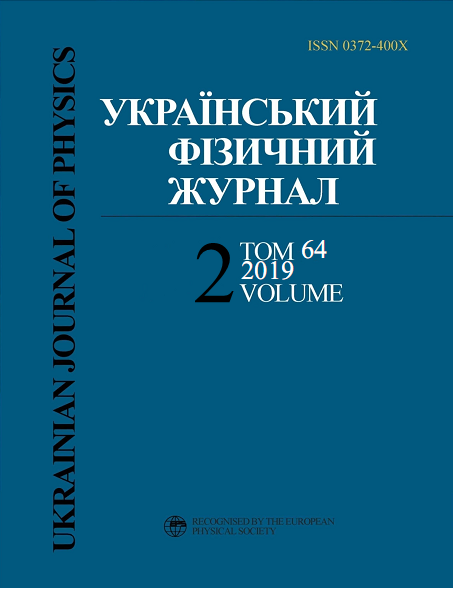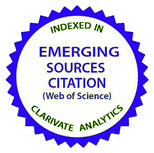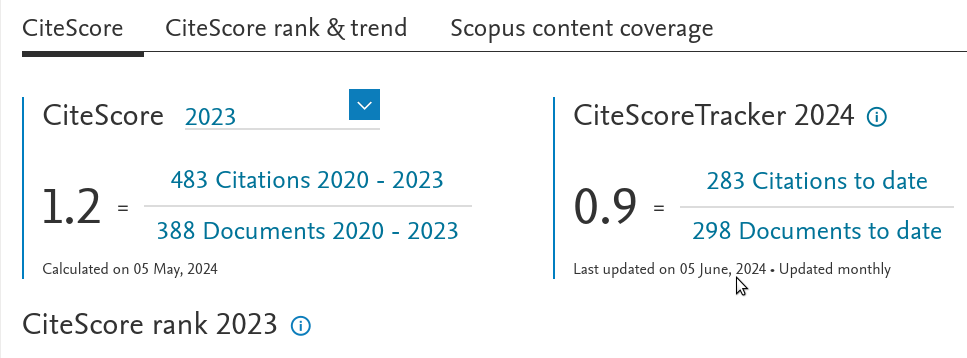Особливості відпалу радіаційних дефектів в монокристалах n-Ge, опромінених електронами ви-соких енергій
DOI:
https://doi.org/10.15407/ujpe64.2.151Ключові слова:
iзотермiчний вiдпал, радiацiйнi дефекти, областi розвпорядкування, n–p-конверсiя, монокристали германiюАнотація
Дослiджено iзотермiчний вiдпал опромiнених потоком електронiв Φ = 5 · 1015 см−2 з енергiєю 10 МеВ монокристалiв n-Ge. На основi одержаних температурних залежностей сталої Холла, з розв’язкiв рiвнянь електронейтральностi, було обчислено концентрацiю радiацiйних дефектiв, що належать А-центрам, в опромiнених монокристалах n-Ge до i пiсля вiдпалу. При температурi вiдпалу TB = 403 K, для часiв вiдпалу до трьох годин, було виявлено аномальне збiльшення сталої Холла. Вiдпал при температурi TB = 393 K протягом однiєї години призвiв до n–p конверсiї. Данi ефекти пояснюються зростанням концентрацiї А-центрiв за рахунок генерацiї вакансiй, якi утворюються при вiдпалi ядер областей розвпорядкування.
Посилання
V.V. Uglov. Radiation-Induced Effects in Solids (Belarusian State Univ., 2007) (in Russian).
V.N. Voevodin, I.M. Neklyudov. Structural-Phase State Evolution and Radiation Resistance of Structural Materials (Naukova Dumka, 2006) (in Russian).
A.G. Chmielewski, M. Haji-Saeid. Radiation technologies: Past, present and future. Radiat. Phys. Chem. 71, 17 (2004). https://doi.org/10.1016/j.radphyschem.2004.05.040
C. Claes, E. Simoen. Germanium-Based Technologies: From Materials to Devices (Elsevier, 2007).
F. Murphy-Armando, S. Fahy. Giant enhancement of n-type carrier mobility in highly strained germanium nanostructures. J. Appl. Phys. 109, 113703 (2011). https://doi.org/10.1063/1.3590334
B. Lemke, R. Baskaran, O. Paul. Piezoresistive CMOS sensor for out-of-plane normal stress. Sensor. Actuat. A 176, 10 (2012). https://doi.org/10.1016/j.sna.2011.12.038
D.N. Lobanov, A.V. Novikov, K.E. Kudryavtsev, D.V. Shengurov, Yu.N. Drozdov, A.N. Yablonskiy, V.B. Shmagin, Z.F. Krasilnik, N.D. Zakharov, P. Werner. Effect of Ge(Si)/Si(001) self-assembled islands parameters on their electroluminescence at room temperature. Semiconductors 43, 332 (2009). https://doi.org/10.1134/S1063782609030105
S. Tong, J. Liu, L.J. Wan, Kang L. Wang. Normal-incidence Ge quantum-dot photodetectors at 1.5 мm based on Si substrate. Appl. Phys. Lett. 80, 1189 (2002). https://doi.org/10.1063/1.1449525
K. Brunner. Si/Ge nanostructures. Rep. Prog. Phys. 65, 27 (2002). https://doi.org/10.1088/0034-4885/65/1/202
K.I. Tapero, V.N. Ulimov, A.M. Chlenov. Radiation Effects in Silicon Integrated Circuits for Space Applications (BINOM, 2014) (in Russian).
A.P. Dolgolenko. Modification of radiation defects in Si and Ge by background impurity. Nucl. Phys. At. Ener. 14, 377 (2013).
P.G. Baranov, A.N. Ionov, I.V. Ilyin, P.S. Kopyev, E.N. Mokhov, V.A. Khramtsov. Electron-paramagnetic resonance in neutron-doped semiconductors with a modified isotopic composition. Fiz. Tverd. Tela 45, 988 (2003) (in Russian).
V.V. Litvinov, L.I. Murin, J.L. Lindstrom, V.P. Markevich, A.N. Petukh. Local vibrational modes of oxygen-vacancy complex in germanium. Fiz. Tekh. Poluprovodn. 36, 658 (2002) (in Russian). https://doi.org/10.1134/1.1485658
J.A. Baldvin. Electron paramagnetic resonance in irradiated oxygen-doped germanium. J. Appl. Phys. 36, 793 (1965). https://doi.org/10.1063/1.1714220
R.E. Whan. Oxygen-defect complexes in neutron-irradiated germanium. J. Appl. Phys. 37, 2435 (1966). https://doi.org/10.1063/1.1708832
G.P. Gaidar. Annealing of radiation defects in silicon. Elektron. Obrab. Mater. 48, 93 (2012) (in Russian).
S.V. Luniov, A.I. Zimych, P.F. Nazarchuk, V.T. Maslyuk, I.G. Megela. Radiation defects parameters determinationin n-Ge single crystals irradiated by high-energy electrons. Nucl. Phys. At. Ener. 17, 47 (2016). https://doi.org/10.15407/jnpae2016.01.047
J. Fage-Pedersen, A.N. Larsen, A. Mesli. Irradiation-induced defects in Ge studied by transient spectroscopies. Phys. Rev. B 62, 10116 (2000). https://doi.org/10.1103/PhysRevB.62.10116
S.V. Luniov, A.I. Zimych, P.F. Nazarchuk, V.T. Maslyuk, I.G. Megela. The impact of radiation defects on the mechanisms of electron scattering in single crystals n-Ge. J. Phys. Stud. 19, 4704 (2015).
E.N. Vologdin, A.P. Lysenko. Integral Radiation-Induced Changes of the Parameters of Semiconductor Materials (Moscow State Institute of Electronics and Mathematics, 1998) (in Russian).
Ya.M. Olikh, I.A. Lysyuk, N.D. Timochko. Acousto-stimulated reduction of radiation-defect annealing temperature in Ge crystals. Tekhnol. Konstr. Elektron. Apparat. 3, 10 (2004) (in Russian).
P.S. Kireev. Semiconductor Physics (Mir Publishers, 1978).
Downloads
Опубліковано
Як цитувати
Номер
Розділ
Ліцензія
Ліцензійний Договір
на використання Твору
м. Київ, Україна
Відповідальний автор та співавтори (надалі іменовані як Автор(и)) статті, яку він (вони) подають до Українського фізичного журналу, (надалі іменована як Твір) з одного боку та Інститут теоретичної фізики імені М.М. Боголюбова НАН України в особі директора (надалі – Видавець) з іншого боку уклали даний Договір про таке:
1. Предмет договору.
Автор(и) надає(ють) Видавцю безоплатно невиключні права на використання Твору (наукового, технічного або іншого характеру) на умовах, визначених цим Договором.
2. Способи використання Твору.
2.1. Автор(и) надає(ють) Видавцю право на використання Твору таким чином:
2.1.1. Використовувати Твір шляхом його видання в Українському фізичному журналі (далі – Видання) мовою оригіналу та в перекладі на англійську (погоджений Автором(ами) і Видавцем примірник Твору, прийнятого до друку, є невід’ємною частиною Ліцензійного договору).
2.1.2. Переробляти, адаптувати або іншим чином змінювати Твір за погодженням з Автором(ами).
2.1.3. Перекладати Твір у випадку, коли Твір викладений іншою мовою, ніж мова, якою передбачена публікація у Виданні.
2.2. Якщо Автор(и) виявить(лять) бажання використовувати Твір в інший спосіб, як то публікувати перекладену версію Твору (окрім випадку, зазначеного в п. 2.1.3 цього Договору); розміщувати повністю або частково в мережі Інтернет; публікувати Твір в інших, у тому числі іноземних, виданнях; включати Твір як складову частину інших збірників, антологій, енциклопедій тощо, то Автор(и) мають отримати на це письмовий дозвіл від Видавця.
3. Територія використання.
Автор(и) надає(ють) Видавцю право на використання Твору способами, зазначеними у п.п. 2.1.1–2.1.3 цього Договору, на території України, а також право на розповсюдження Твору як невід’ємної складової частини Видання на території України та інших країн шляхом передплати, продажу та безоплатної передачі третій стороні.
4. Строк, на який надаються права.
4.1. Договір є чинним з дати підписання та діє протягом усього часу функціонування Видання.
5. Застереження.
5.1. Автор(и) заявляє(ють), що:
– він/вона є автором (співавтором) Твору;
– авторські права на даний Твір не передані іншій стороні;
– даний Твір не був раніше опублікований і не буде опублікований у будь-якому іншому виданні до публікації його Видавцем (див. також п. 2.2);
– Автор(и) не порушив(ли) права інтелектуальної власності інших осіб. Якщо у Творі наведені матеріали інших осіб за виключенням випадків цитування в обсязі, виправданому науковим, інформаційним або критичним характером Твору, використання таких матеріалів здійснене Автором(ами) з дотриманням норм міжнародного законодавства і законодавства України.
6. Реквізити і підписи сторін.
Видавець: Інститут теоретичної фізики імені М.М. Боголюбова НАН України.
Адреса: м. Київ, вул. Метрологічна 14-б.
Автор: Електронний підпис від імені та за погодження всіх співавторів.

















